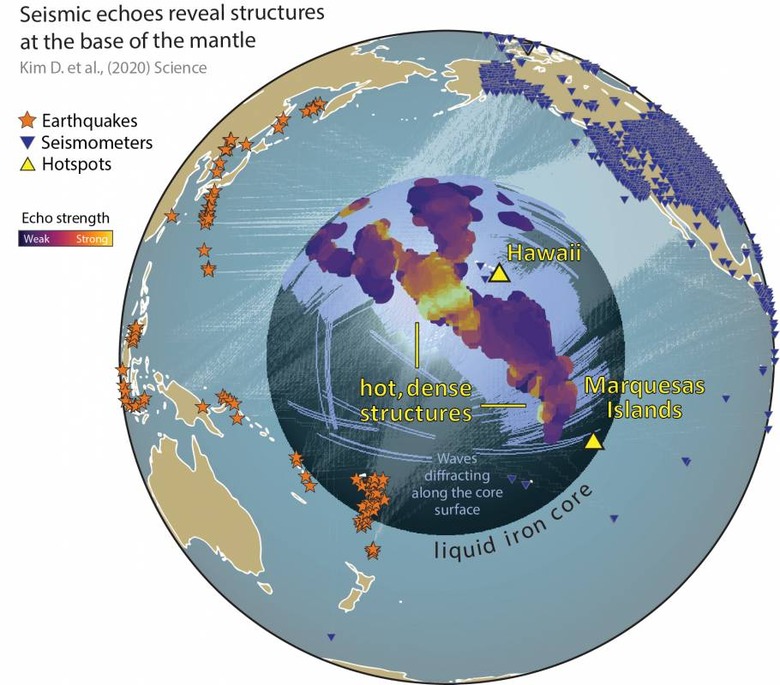Star Sequencer Turned Inward Finds Mystery Masses In Earth
Mysterious structures far below the surface of the Earth have been identified, raising new questions about what makes up our planet in its least-understood depths. While Earth is known to have a molten core of liquid iron surrounded by a solid mantle layer, the exact processes going on around that so-called core-mantle boundary are barely explored.
That, of course, is down to the fact that actually penetrating deep enough to research that area is effectively impossible, at least physically. Instead new research has taken advantage of seismology methods to zero in on deep structures that shape how earthquakes resonate through our planet.
While we only typically take notice of earthquakes when they're strong enough to cause visible damage, the reality is that they're much more common. Each creates seismic waves below the surface of the Earth, which can travel thousands of miles through the planet. Importantly, those waves are changed as they pass through areas with different characteristics, such as density, composition, or temperature.
It's that which researchers at the University of Maryland's Department of Geology took advantage of, to gain a better understanding of just what's happening at the core-mantle boundary. By tracking the echoes of those seismic waves beneath the Pacific Ocean basin, they found that around 40-percent of the wave paths contained what are known as shear wave echoes.

They're generated as the reverberations pass along the core-mantle boundary, the waves diffracting and thus arriving as seismometer sites at slightly different times. Echoes from nearby structures arrive at the instruments more rapidly; those from larger structures are louder. Combining measurements of travel time and amplitude, models of the physical properties of the rock and other substances can be constructed.
Typically, though, only a few waves would be measured. That can leave it difficult to identify different echoes, which can blend into the underlying reverberations. What the UMD geologists did was cast a far wider net. "By looking at thousands of core-mantle boundary echoes at once, instead of focusing on a few at a time, as is usually done, we have gotten a totally new perspective," Doyeon Kim, postdoctoral fellow in the UMD Department of Geology and the lead author of a new paper on the research, explains.
Kim and the team used a machine learning algorithm, dubbed Sequencer, which could analyze 7,000 different seismograms recorded from hundreds of earthquakes. These took place between 1990 and 2018, all of 6.5 magnitude or greater, from around the Pacific Ocean basin. Although Sequencer was originally developed for astronomers to spot radiation patterns in space, it turned out just as adept at picking them out in seismic echoes.
"The scientists found that the large patch of very dense, hot material at the core-mantle boundary beneath Hawaii produced uniquely loud echoes, indicating that it is even larger than previous estimates," the UMD says. "Known as ultralow-velocity zones (ULVZs), such patches are found at the roots of volcanic plumes, where hot rock rises from the core-mantle boundary region to produce volcanic islands. The ULVZ beneath Hawaii is the largest known."
Meanwhile, another ULVZ was identified beneath the Marquesas Islands, the first time it was spotted.
What remains to be figured out is just how these geological features are impacted by – and help shape – the tectonic movements of the Earth. The hope is that the areas of unusually dense, hot rock could better explain how the planet formed, and how it could further change over time. That, in turn, might assist in predicting future earthquakes.
